The food and beverage metal cans market is expected to increase from USD 62.01 billion in 2026 to USD 116.91 billion by 2035, growing at a CAGR of 7.3% throughout the forecast period from 2026 to 2035. The demand for food and beverage metal cans is stretching due to the growth in digital printing technology, which has created materials that have become lighter and developed coatings that lower expenses while providing sustainability advantages.
The region, North America, holds the greatest share in 2024, and Asia Pacific is the fastest-growing region. The food and beverage metal cans market is expanding quickly. The most common material type was aluminium cans. Beverage cans were dominated by product type. The medium can account for the largest can size, while the small can is set to grow quickly. By functionality, easy-open cans have dominated the food and beverage metal cans market. By distribution channel, the retail sales are the dominating one, while online sales are the fastest-growing segment.
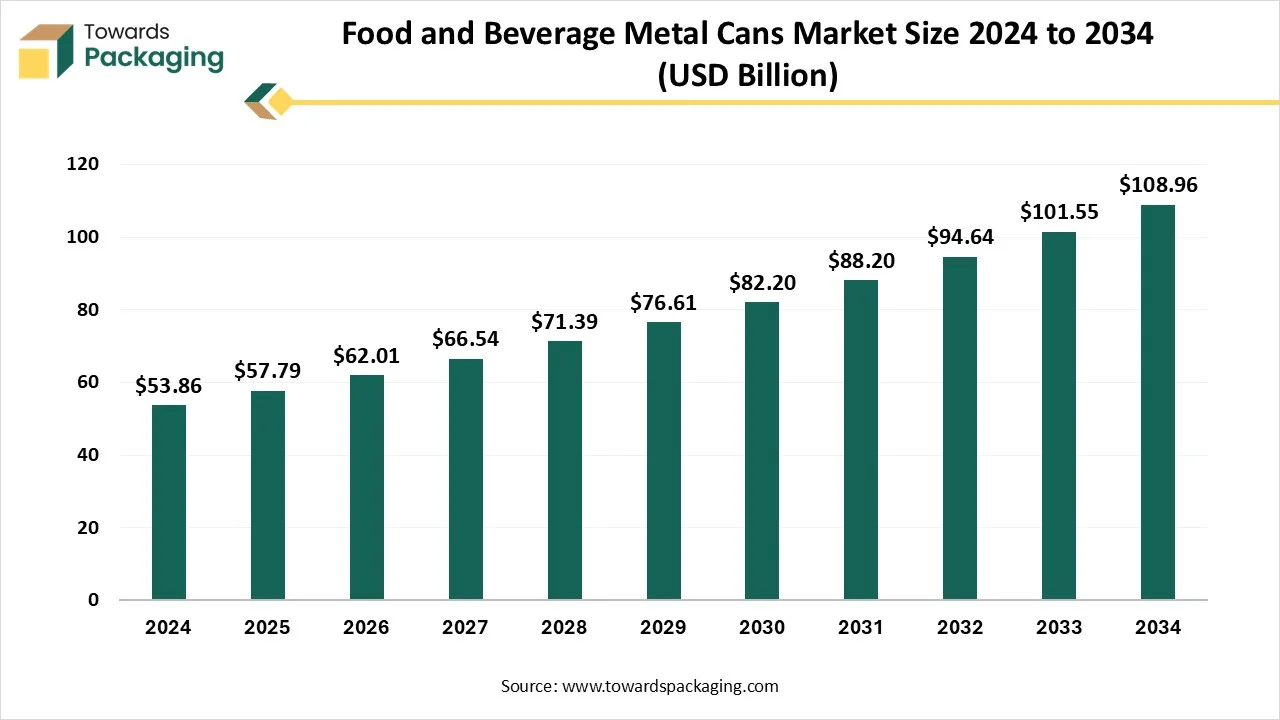
The food and beverage metal cans market refers to the manufacturing and distribution of metal containers, primarily made of aluminum or steel, used for packaging various food and beverage products. These cans provide a long shelf life, protection from contamination, and maintain the quality and taste of the contents. They are widely used for beverages such as soft drinks, beer, and energy drinks, and foods like vegetables, fruits, and ready-to-eat meals.
Food in cans is convenient to store without using energy. Cans are manufactured in different sizes and shapes to align with the various demands of users. For instance, up to 10,000 80 g cans can fit into one cubic metre. Metal packaging is hence specifically effective in production, storage, and transport, and lowers the risk of spoilage and spillage. To deliver additional stability, cans are often served with grooves, the "so-called" corrugations. These grooves have a functional aim. They allow the can to stretch and compact with temperature changes during the sterilisation procedure without distorting.
The metal can industry hasn't remained motionless. Current inventions have led to the growth of Drawn and Wall iron (DWI) Cans, which show the main advancements in packaging technology. These cans are produced utilising a procedure that draws the metal into shape and then ironing the walls to receive the required thickness and power. DWI cans can serve required material savings as compared to regular can manufacturing procedures. By utilising drawing and ironing procedures, producers can create cans with thinner walls while tracking structural integrity.
This decrease in material usage translates to cost savings and environmental advantages, as less raw material is needed for each can generated. The environmental impact expands beyond material savings. Lighter cans need less energy transport, lowering the carbon footprint linked with distribution. Additionally, the aluminum used in several DWI Cans is highly recyclable, with recycled aluminum needing only 5% of the energy needed to generate new aluminum from raw materials.
Metal packaging for food has developed mainly over the years. Inventions such as easy-open lids, lightweight aluminum cans, and BPA-free linings have improved both sustainability and convenience. Brands continue to invest in research and development to develop food protection while lowering the environmental impact of packaging waste. Aluminium cans totally dominate the beverage industry, specifically in energy drinks, soft drinks, and beer packaging too. These cans are easy to stack, lightweight, and resistant to breakage, making them the preferred choice for producers. Furthermore, aluminum cans can chill beverages faster than other materials, enhancing the consumer experience.
Metal cans are relatively expensive compared to plastic. First of all, the price of metal materials is relatively high. Secondly, the metal plating process needs assistance, which increases production costs. This may affect the competitiveness of metal cans in particular applications. As compared to lightweight packaging materials, such as metal cans, they are heavier. This may generate inconvenience during travelling and handling, because of energy consumption. For products that need lightweight packaging, metal cans may not be the best choice. Although metal cans have a particular degree of power and stiffness, they may still be damaged or deformed when affected by large external forces. Especially in high-intensity transportation and storage environments, the impact resistance of metal cans may be ineffective, affecting the safety of the content.
Metal packaging protects the world from exterior points, a specifically crucial job for the transportation of toxic substances and food and beverage ingredients. Metal packaging serves as an impenetrable barrier against pollutants from gases, chemicals, and bacteria. But packaging will be as secure as the weakest ink, and for several products, this is the closure. Cans are one of the most protected types of packaging because goods are securely packed at the canned factory, and it's a one-use open; once a can has opened, it can't be reclosed. Food and beverages demand a lot from their packaging format. The metal food packaging can resist the highest heating temperatures, which means the canning procedure can be utilised to protect meat, vegetables, and fish, which would otherwise spoil quickly. Sensitive foods can be steam-exhausted and packed hot to make sure all bacteria are killed, to keep the contents safe and fit to eat months later.
Aluminium cans are dominating and the fastest growing due to several reasons, such as they are perfect for preserving food and beverages over extended periods. Like glass and plastic, aluminum is dense to oxygen and light, these two elements, which often lessen flavour and food quality. This feature is especially important for beverages and sensitive products, as it assists in maintaining freshness, taste, and nutritional value. For brands, this expanded shelf life translates into fewer returns because of spoilage and a developed customer experience. Buyers enjoy products that retain freshness for a longer time, whether on a retail shelf or in their pantry at home.
The beverage material type has dominated the food and beverage market, as with the growth in the health and wellness industry, users are seeking beverages with functional advantages. From drinks that boost immunity to gut-health marketing drinks, the urge for health-oriented beverages is growing. Such chemical ingredients utilised in making these functional beverages are vitamins, prebiotics, and minerals. Producers are heavily using these ingredients to reassure concerned users about their health, who expect more advantages through beverage consumption. But a few products, namely collagen, antioxidants, and adaptogens, that were found to serve particular health benefits, have been included in beverages and are on the increase among buyers.
Medium metal cans have dominated the industry as they initially deliver the protection to food products from physical damage, oxygen, and light while also serving a longer shelf life to the inside products of food and beverage containers, and also give easy transportation and storage. The integration of physical protection and barrier properties against expands the shelf life of food products, allowing them to be stored for longer periods without significant quality degradation. The stackable durability and nature of metal can make them perfect for effective transportation and storage, both for users and manufacturers.
Small cans are initially made from tinplate (tin-coated plate), that are used in food packaging for many reasons: durability, preservation, and recyclability. They serve as an airtight seal to protect food from oxygen, moisture, and contaminants, expanding shelf life and preventing spoilage. Their rigidness ensures storage and transport, while their recyclability assists sustainability. The strength and rigidity of small cans prevent the food from exterior damage during transportation, handling, and storage, too. This lowers the risk of breakage and leakage, making sure the product reaches the users in perfect condition.
Easy open cans are dominating and fastest growing in terms of functionality, caused by demand in FMCG and food and beverage, serve ultimate integrity and durability, and track freshness and flavor. With the cutting-edge technology, the metal sealing comes in lightweight and is safe for carrying. With the development in living standards, folks want their consumer goods in updated packaged solutions. From tea, coffee, dry powdered food, canned food, and jam to consumer goods, the peel ends have become the latest trend in the packaging industry. The base lids of Pell off ends are created from tinplate or aluminum with a multi-layered plastic membrane, sterilization at extremely high temperature (121 degrees Celsius) and high pressure, thus, the quality of the inside food remains undamaged. Users quickly get attracted to easily open cans because of their attractive colour appearance and easy opening performance.
Direct sales have dominated the market, which plays an important role in examining how products and services reach end-users. These channel series are from direct sales and online platforms to other integrators and distributors. Each channel has its own benefits, with real sales allowing companies to gain greater control over customer relationships and pricing; on the other hand, the third-party distributors can serve a huge market reach and faster scaling. The food segment, specifically in the canned fruit, vegetable, and meat, has experienced the greatest growth in metal cans. Rapid urbanisation, busy lifestyles, and rising preference for single-use packaging have also been growing in the food and beverage industry.
The growth of online retail has significantly influenced the food and beverage metal cans industry. With the growing selection of convenience, users are shifting to e-commerce platforms for purchasing canned food and beverages. This transformation is due to busy lifestyles, and the expansion of online grocery shopping among youth, especially Gen Z and millennials, as they want every product at their doorstep ready, and they are perfect for well-suited online sales handling during shipping from one place to another. The growth in online subscriptions, on-the-go consumption, and ready-to-eat meals has led to the development of online sales in the food and beverage market.
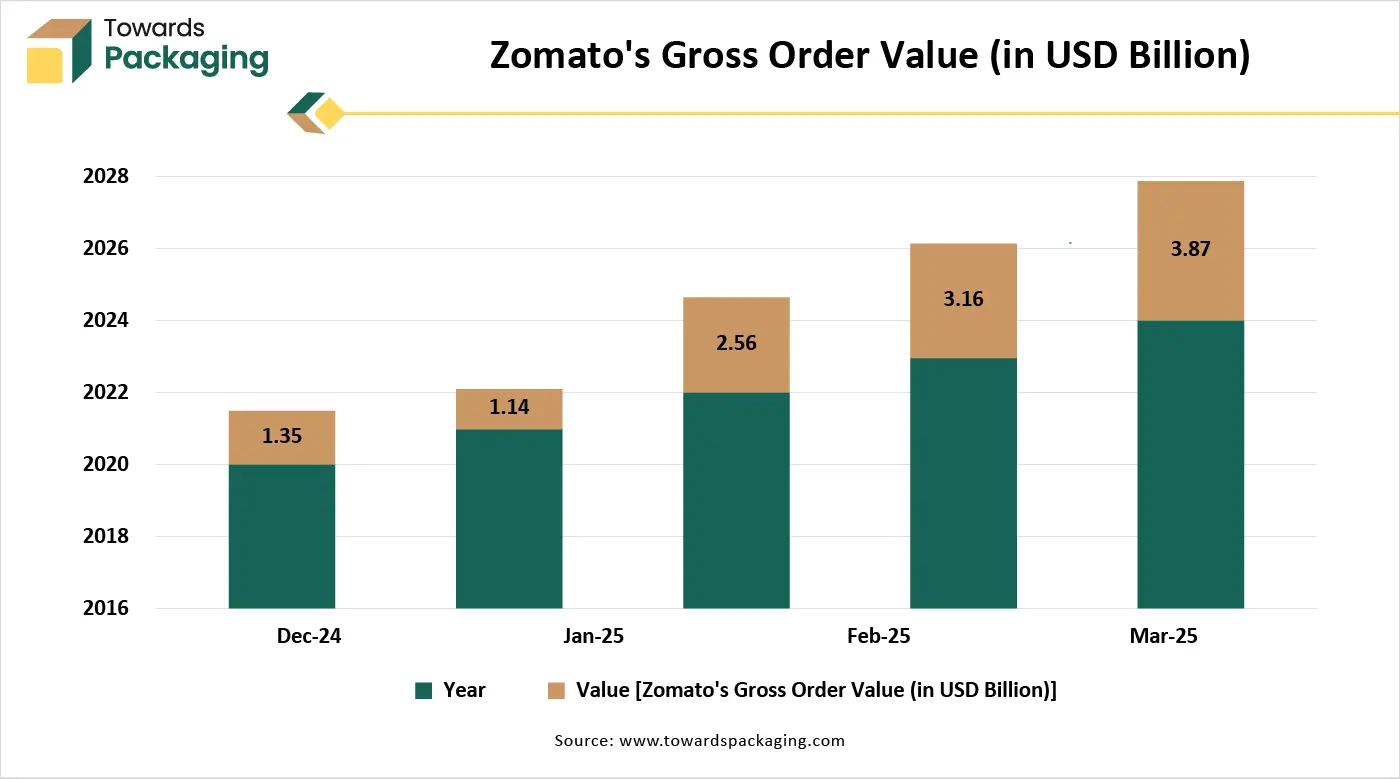

North America has dominated the market because of the growth in metal can packaging of wine, cocktails, and both hard and soft drinks, heavily driven by rising demand for portability. The beverage sector's dependency on metal cans can be classified into two main categories: alcoholic and non-alcoholic. Also, beer has been the main food packaging, notably wine, other liquors, and glass bottles, too, are now making the transformation to metal cans. Organizations are investing in AI-based production automation, developing embossing technology, and corrosion-proof coatings. The importance is also on encouraging the extended producer responsibility (EPR)schemes, and the growing population of circular economy measures is stressing firms to move towards completely recyclable and renewable materials, such as metal can packaging.
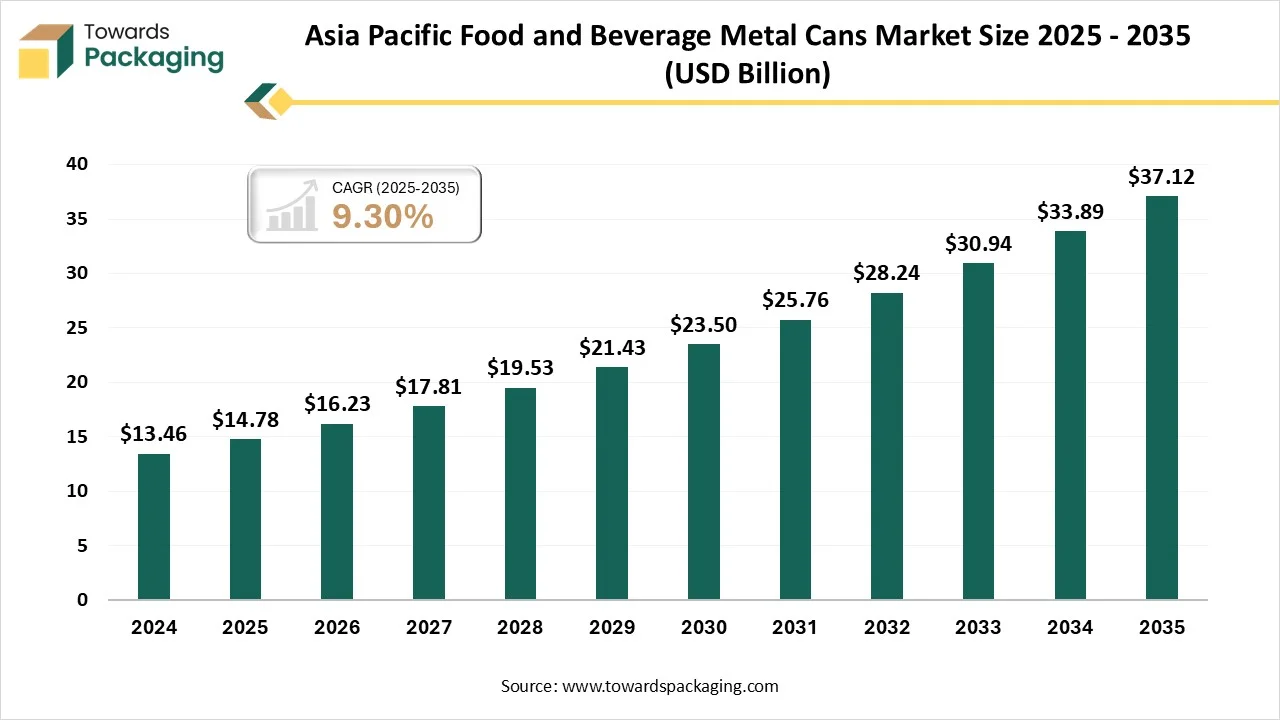
The food and beverage metal cans markets in Asian countries like India, China, Japan, and South Korea are witnessing a transformative change, driven by urbanization, transforming consumer lifestyles, and growing demand for convenience. Inventions in sustainable packaging, moves in buyer decisions, and technological advancements are creating opportunities, shaping the industry's future prospects. Elements like the expansion of organized retail, uptick in exports, and growing middle-class income group are supporting the industry. Nanofabrication technologies are growing as cutting-edge solutions to make active materials for use in the design of coatings, packages, and packaging technologies. These solutions assist in maintaining and improving sensory and nutritional characteristics, developing shelf life, and increasing food safety.
The global food cans market is poised for steady growth, expected to increase from USD 4.16 billion in 2025 to USD 7.49 billion by 2034, expanding at a CAGR of 6.75% during the forecast period.
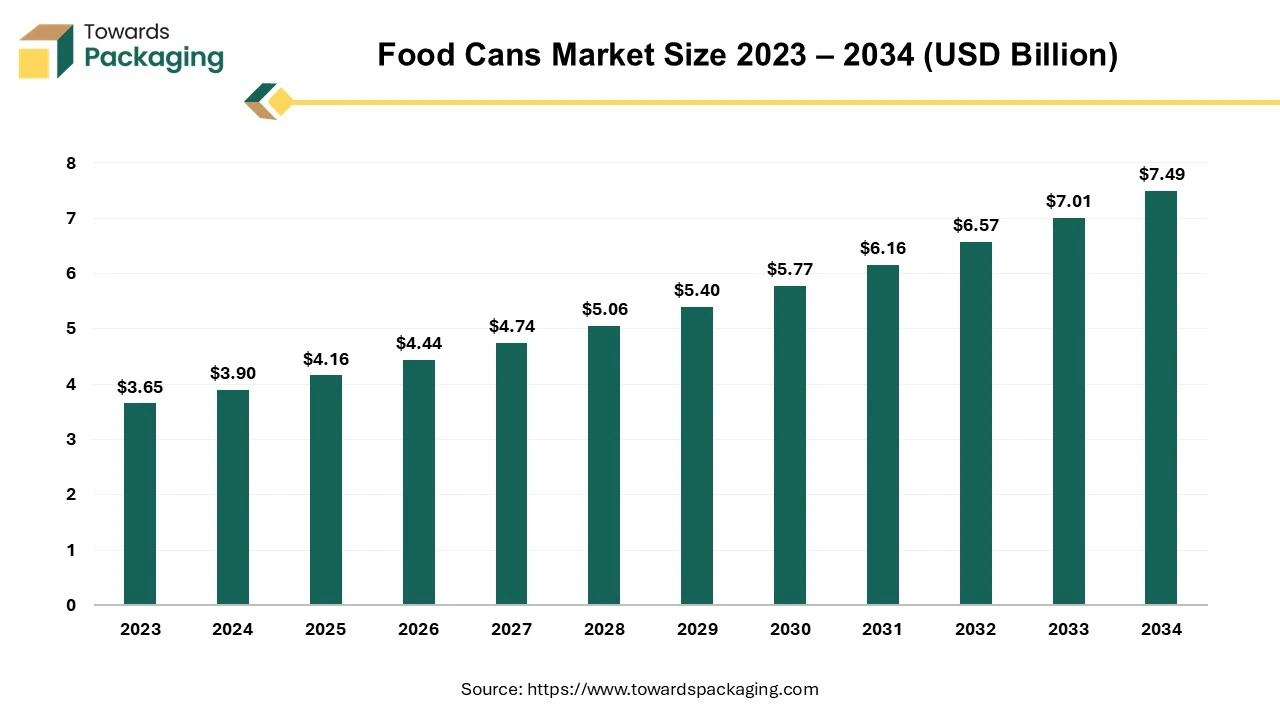
The food cans market is growing significantly due to the rising demand for the consumption of packed food items due to a continuously changing lifestyle. There is a huge variety of food cans available to keep the food quality fresh and harmless to consume which enhances the development of the market. The growing demand for ready-to-eat food has influenced the food cans industry profoundly.
The global beer cans market is expected to increase from USD 13.85 billion in 2025 to USD 19.93 billion by 2034, growing at a CAGR of 4.13% throughout the forecast period from 2025 to 2034.
Rising beer consumption is projected to drive the growth of the global beer cans market over the forecast period. Cans are estimated to be the preferred and favoured choice of beer manufacturers when releasing limited-edition beer cans and other promotional events.
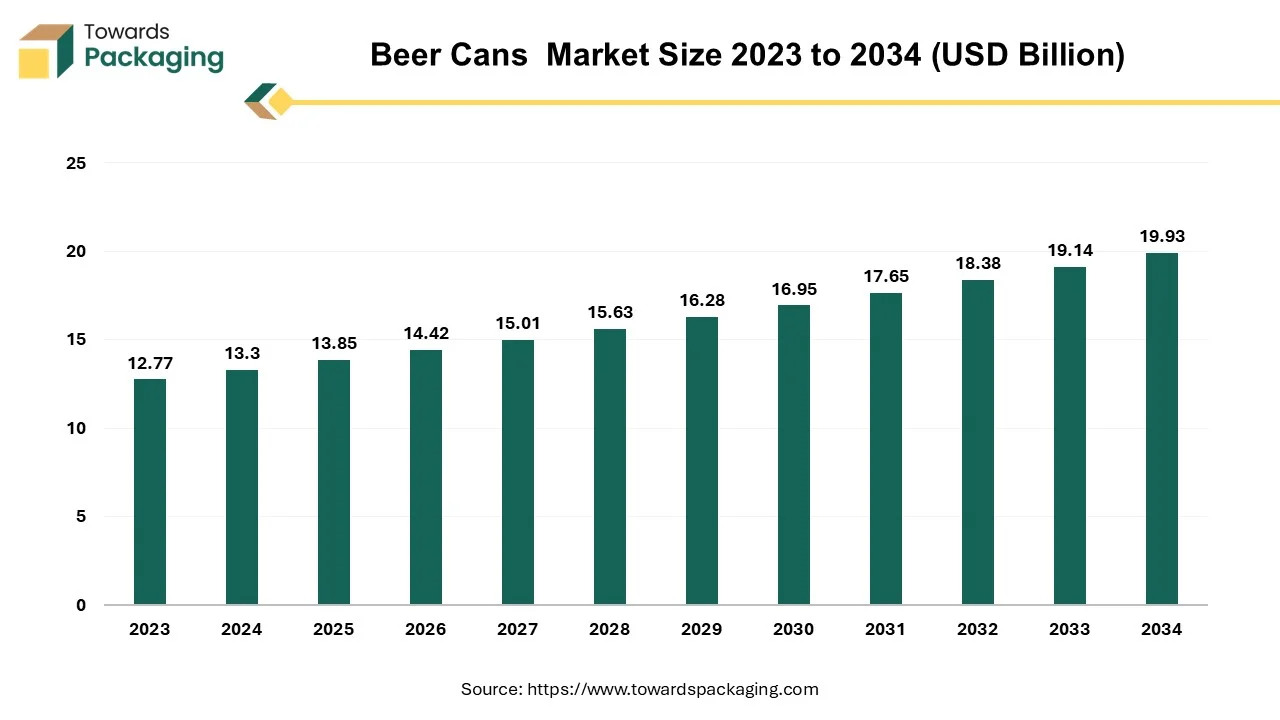
The beer cans market refers to the industry involved in the production, distribution, and consumption of beer packaged in cans. Beer cans are typically made from aluminum or steel. Aluminum cans are more popular due to their lighter weight, recyclability, and ability to protect beer from light and oxygen, which can affect taste.
The fast-food containers market is expected to grow from USD 62.86 billion in 2025 to USD 103.09 billion by 2034, with a CAGR of 5.65% throughout the forecast period from 2025 to 2034. The rising fast-food industry, and rising convenience among consumers, availability of on-the-go food products has influenced the growth of the market. Huge demand for customization of fast-food packages has pushed this market to grow exponentially. With the increasing food delivery platforms and online orders of food products has pushed innovation in this market for efficient delivery of food products. This market is dominating in the Asia Pacific region due to the growing urbanization and fast-food culture among consumers.
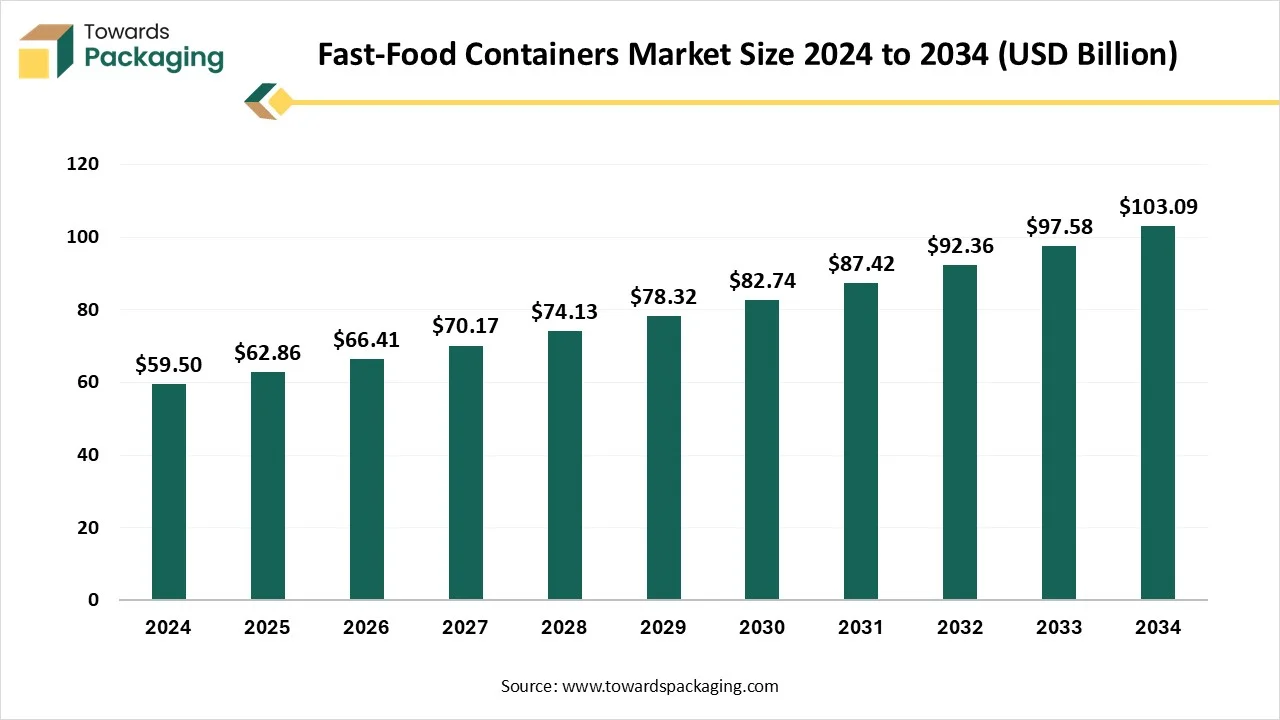
The fast-food containers refers to the industry focused on manufacturing, distributing, and utilizing packaging solutions designed specifically for the quick-service and fast-food industry. These containers include boxes, trays, clamshells, cups, bowls, wraps, and lids, made from diverse materials such as paper & paperboard, plastic, foam, aluminum, and biodegradable alternatives. They play a crucial role in food safety, convenience, portion control, and brand visibility, while also addressing growing concerns over sustainability, recyclability, and government regulations on single-use packaging.
The beverage packaging market is anticipated to grow from USD 176.57 billion in 2025 to USD 275.09 billion by 2034, with a compound annual growth rate (CAGR) of 5.05% during the forecast period from 2025 to 2034.

Beverage packaging is known as any sort of packaging developed to hold liquids for consumption. These products serve several purposes, including protecting the beverage from contamination, maintaining freshness, providing convenience for storage and transport, and offering a platform for branding and product information.
The food packaging market is projected to reach USD 746.98 billion by 2034, growing from USD 427.40 billion in 2025, at a CAGR of 5.7% during the forecast period from 2025 to 2034. The rising demand for convenient, sustainable, and smart solutions driven by changing consumer lifestyles, health awareness and e-commerce growth is fueling market expansion. The surge in processed food consumption and global trade is also pushing innovation in material science and packaging functionality.
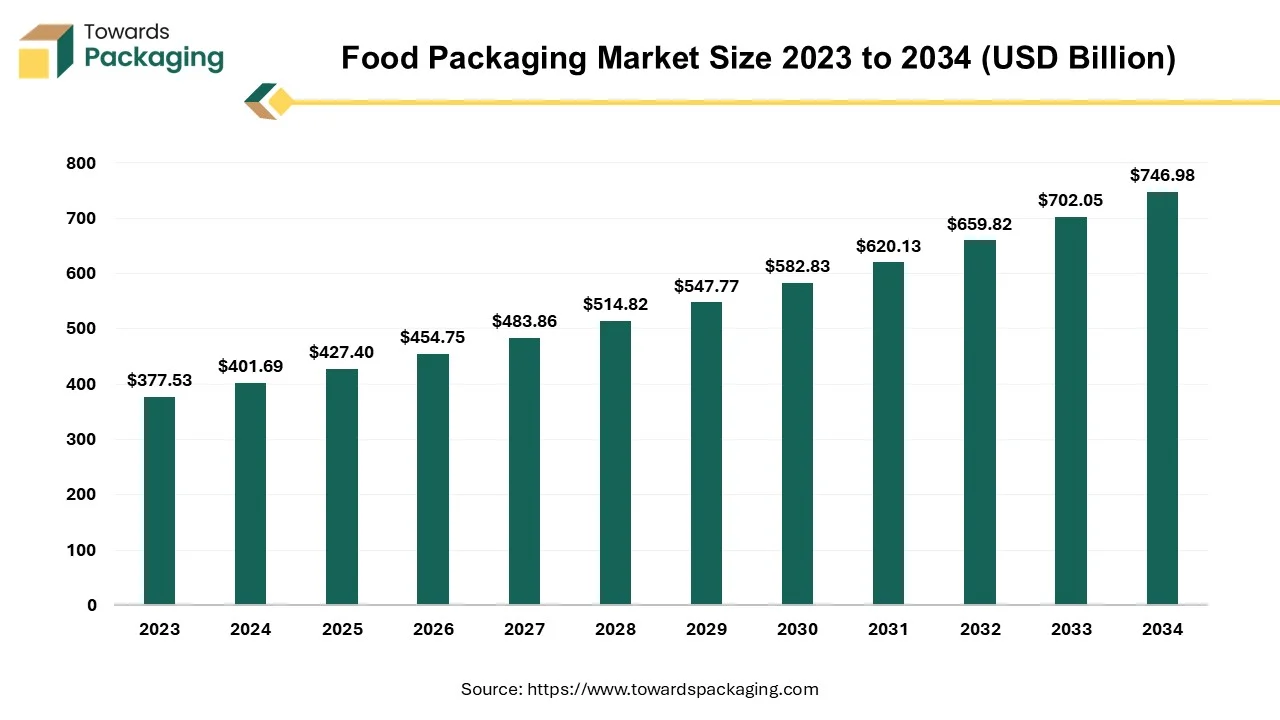
The methods and materials utilized to protect, contain, preserve, transport, and present food products is known as food packaging. It acts as a barrier between food and external factors like moisture, contamination, light, air, and physical damage ensuring the food remains fresh, safe, and appealing from production to consumption. The food packaging serves as practical purposes like: providing information (nutritional facts, expiry date, ingredients), facilitating storage and handling, supporting marketing and branding through design and messaging.
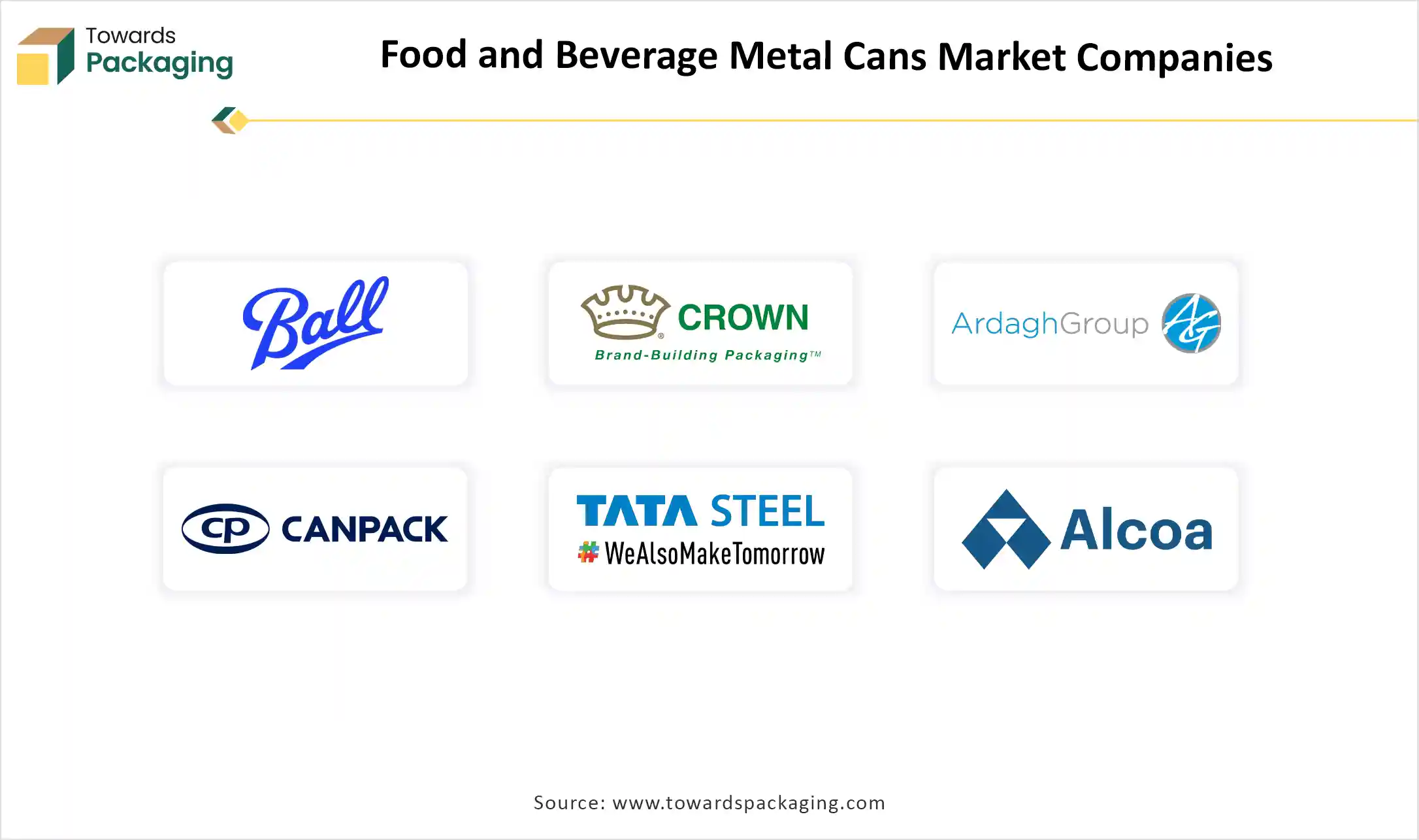
By Material Type
By Can Type
By Product Type
By Can Size
By Coating Type
By Functionality
By Distribution Channel
By Region
December 2025
December 2025
December 2025
December 2025